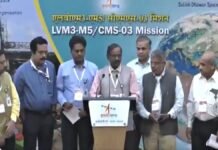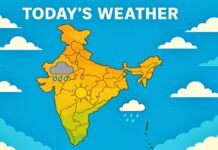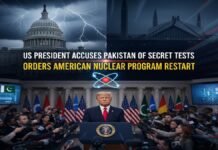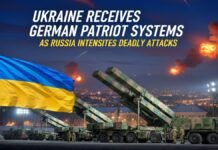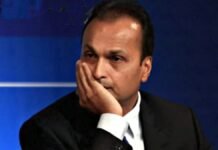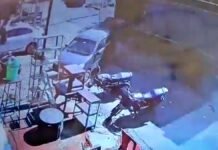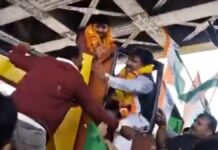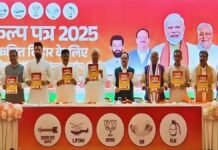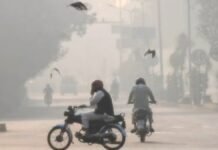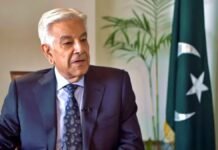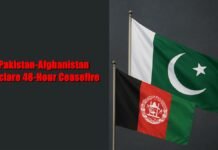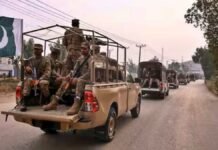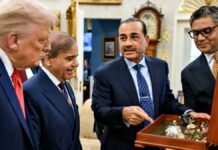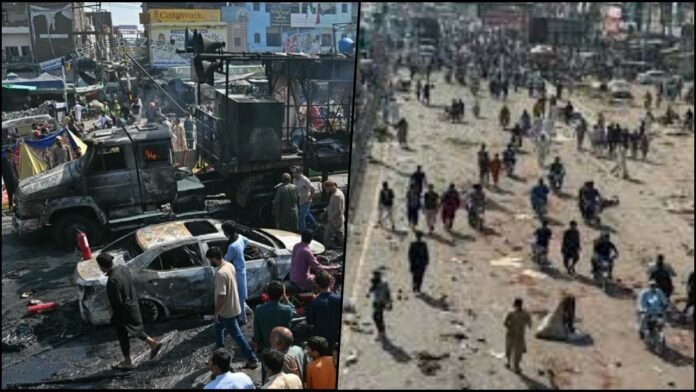
Key Points
- At least 5 people officially confirmed dead (1 police officer and 4 civilians) in clashes between Pakistani forces and TLP protesters in Muridke on October 13, 2025
- TLP claims over 250 workers killed and 1,500+ injured during multi-day crackdown; figures not independently verified
- TLP chief Saad Hussain Rizvi reportedly shot multiple times and remains in critical condition
- Punjab Police launched pre-dawn operation on October 13 to disperse protest camp in Muridke using tear gas and force
- Over 48 law enforcement officials injured, 17 from gunshot wounds; one Station House Officer (SHO) killed
- Protests began October 10 as TLP attempted march from Lahore to US Embassy in Islamabad against Gaza ceasefire deal
- Roads, motorways closed around Lahore and Islamabad; mobile internet services suspended in capital region
- Over 170 TLP activists detained across Punjab; schools closed in Islamabad amid security concerns
Islamabad: Pakistan descended into violent chaos on Monday, October 13, 2025, as security forces launched a major pre-dawn crackdown on thousands of Tehreek-e-Labbaik Pakistan (TLP) protesters camped in Muridke, triggering fierce clashes that left multiple people dead and hundreds injured in one of the deadliest confrontations between Pakistani authorities and the far-right Islamist group. The violence erupted as TLP activists attempted to march from Lahore to Islamabad to protest against the US-brokered Gaza ceasefire agreement between Israel and Hamas, denouncing what they characterized as a betrayal of the Palestinian cause.
Conflicting Casualty Reports Create Confusion
Official casualty figures from Punjab Police indicate at least five people were killed in Monday’s clashes, one Station House Officer (SHO) and four civilians, including three TLP members. Punjab Police spokesperson Mubashir Hussain confirmed these deaths while reporting that 48 law enforcement officials were injured, with 17 sustaining gunshot wounds.
However, TLP has disputed these official figures dramatically, claiming that over 250 of its workers have been killed and more than 1,500 injured during the multi-day crackdown that began last Friday. Some reports from TLP sources and local media suggest that at least 11 protesters were killed on Monday alone in Muridke. These higher casualty claims have not been independently verified by international observers or neutral parties, creating significant uncertainty about the true scale of violence.
Footage of Muridkee by a possible Policeman Heartbreaking scenes 💔 which can't be share on this platform 💔 (Almiya hi almiya hy ….🥺) #muridke #lahore #karachi #explorereel #explprepage #sad
— Pakistan Viral Series (@Pakviralseries_) October 13, 2025
pic.twitter.com/NV0qIM0z3r
Local media reports and eyewitness accounts have suggested the actual death toll could be significantly higher than official police statements acknowledge. TLP supporters have shared videos and images on social media claiming to show bodies of protesters, though these materials could not be independently authenticated. The large discrepancy between official government figures and TLP claims has raised concerns about transparency and accountability in the security forces’ response.
Pre-Dawn Operation in Muridke
The most violent confrontation occurred in the early morning hours of October 13 when Punjab Police, supported by Pakistan Rangers, launched a major operation to disperse the TLP protest camp in Muridke, located in Sheikhupura district along the GT Road highway connecting Lahore to Islamabad. The operation began around 4:00 AM, before morning prayers, catching many protesters by surprise.
According to police accounts, security forces initially used smoke grenades and tear gas to disperse the thousands of TLP activists who had been camping in Muridke since Saturday night after breaking through multiple police barricades from Lahore. Punjab Police claimed that when dispersal efforts began, TLP workers responded by pelting stones, using spiked batons and petrol bombs, and eventually opening fire with live ammunition.
“When the dispersal operation began, workers of Tehreek-e-Labbaik Pakistan (TLP) resorted to stone-pelting, using spiked batons and petrol bombs. Subsequently, they engaged in indiscriminate firing, resulting in loss of life to civilians and law enforcement personnel,” Punjab Police stated in a post on X. Police accused the demonstrators of using sophisticated weapons and engaging in “indiscriminate firing” that killed the Station House Officer and injured dozens of other officers.
TLP’s Contradicting Account
The Tehreek-e-Labbaik Pakistan has presented a starkly different narrative of the Muridke confrontation, accusing Pakistani Rangers and police of opening fire indiscriminately on unarmed protesters. TLP spokesperson and senior members claim security forces used lethal force without provocation, firing live ammunition directly into crowds of peaceful demonstrators.
According to TLP accounts, Rangers and police first threw smoke grenades and then began shooting to stop the march toward Islamabad. The organization alleges that to erase evidence of their actions, Pakistani security forces set fire to the TLP’s stage and camp structures where bodies of several workers were already lying. TLP has released videos purporting to show burning vehicles and structures, though the circumstances captured in these videos could not be independently verified.
The group maintains that its protest was entirely peaceful and that demonstrators were unarmed when security forces opened fire. TLP supporters have described scenes of terror, with witnesses claiming they heard continuous gunfire and explosions throughout the pre-dawn operation. These contradictory accounts from authorities and protesters reflect the deep polarization surrounding the incident and the difficulty of establishing verified facts amid the chaos.
TLP Chief Reportedly Shot, Condition Critical
One of the most serious allegations involves TLP chief Hafiz Saad Hussain Rizvi, who the organization claims was shot multiple times during the police and Rangers’ operation in Muridke. According to TLP sources and local media reports, Rizvi was standing on the stage addressing his supporters and appealing to security forces to cease firing when he was hit by gunfire.
TLP claims Rizvi fell from the stage immediately after being shot and remains in critical condition. Videos circulated by TLP supporters purport to show Rizvi making appeals for calm and urging security forces to stop shooting shortly before the alleged attack. Reuters reported that Rizvi suffered three gunshot wounds during the incident.
However, there has been no official confirmation from the Pakistani government or military regarding Rizvi’s condition. Unconfirmed reports circulating on social media initially claimed Rizvi had been killed, but these reports have not been substantiated. The lack of clear information about the TLP leader’s status has fueled speculation and heightened tensions among his supporters, who view him as a charismatic figure capable of mobilizing massive protests.
Origins: March Against Gaza Peace Agreement
The violent confrontation represents the culmination of a protest movement that began on October 10, 2025, when TLP launched what it called the “Labbaik Ya Aqsa Million March” from Lahore toward Islamabad. The march was organized to protest against the US-brokered Gaza ceasefire agreement between Israel and Hamas that was announced on October 8 and implemented on October 10.
TLP opposes the ceasefire deal, viewing it as a betrayal of the Palestinian cause and insufficient in addressing what the group characterizes as Israel’s atrocities against Palestinians. The organization planned to stage demonstrations outside the US Embassy in Islamabad, demanding stronger Pakistani government action in support of Palestine and opposition to American Middle East policies.
Senior TLP member Allama Muhammad Irfan explained that “the march was in solidarity with the people of Gaza” and that the group had “no demands” beyond expressing support for Palestinians. “We have no idea when we will reach Islamabad, but the government is being brutal with us. We are not negotiating with the government at all,” Irfan told AFP.
The protest march gained momentum despite Pakistani government warnings and roadblocks, with thousands of TLP supporters joining the procession as it moved from Lahore toward the capital. The group’s stated objective was to reach the US Embassy in Islamabad to demonstrate Pakistan’s solidarity with Gaza and opposition to what TLP views as an unjust ceasefire that fails to adequately address Palestinian rights.
Multi-Day Timeline of Violence
The confrontation between TLP and Pakistani authorities has unfolded over multiple days, escalating from initial protests on Friday, October 10, to Monday’s deadly crackdown. On the first day of protests, clashes erupted in Lahore as police attempted to prevent the march from leaving the city, with TLP claiming that approximately 15 people were killed in Friday’s confrontations.
Despite the initial violence, the march continued under TLP chief Saad Hussain Rizvi’s leadership, with protesters breaking through police barricades and containers placed to block roads. By Saturday, the main procession had reached Muridke, approximately 35 kilometers from Lahore on the GT Road, after some of the fiercest clashes yet in Lahore that left over 100 officers injured, many critically.
Violence also broke out in Lahore’s Shahdara area over the weekend, where protesters attacked police facilities, looted vehicles, and damaged property. Several policemen were reported missing amid fears they may have been abducted by angry protesters. The TLP supporters set up a protest camp in Muridke on Saturday evening, where negotiations between the group and the Pakistani government continued for two days over whether to allow the march to proceed to Islamabad.
Government Negotiations and Failed Dialogue
Throughout Sunday, October 12, discussions took place between the Punjab provincial government and TLP representatives in an attempt to defuse the crisis and prevent further violence. Senator Rana Sanaullah, government adviser Hafiz Tahir Ashrafi, and Punjab Health Minister Khawaja Salman Rafique held talks with a TLP team, with government officials expressing hope for a “breakthrough”.
However, these negotiations ultimately failed to produce an agreement that would prevent Monday’s violent crackdown. By late Sunday, Punjab Police Inspector General Dr. Usman Anwar chaired a high-level meeting that ordered “more stringent measures” following reports of vandalism, attacks on law enforcement, and property damage. Large contingents of Pakistan Rangers and police from five districts were deployed to Muridke and surrounded the TLP protest camp in apparent preparation for a major operation.
The decision to use force came after TLP refused to abandon its plan to march to Islamabad despite government appeals. Interior Minister Talal Chaudhry accused TLP of “political blackmail” and alleged that seized weapons showed the group’s intent to attack police, though TLP has denied possessing weapons and maintains its protest was peaceful.
Widespread Disruption and Security Measures
The TLP protests and subsequent crackdown have caused massive disruption across Pakistan’s most populous province, Punjab, particularly affecting the major cities of Lahore and Islamabad. Authorities have closed roads and motorways around both cities multiple times, with closures that had briefly reopened on Sunday being reimposed on Monday amid the violence.
Mobile internet services have been suspended in Islamabad and neighboring Rawalpindi as authorities attempt to prevent protesters from coordinating and limit the spread of videos showing the violence. Several schools in Islamabad closed early on Monday amid fears of further violence spreading to the capital.
The GT Road, Pakistan’s busiest highway connecting Lahore to Islamabad and beyond, has been effectively paralyzed by the protests, with TLP supporters occupying sections and authorities erecting barriers of shipping containers to prevent movement. Metro train tracks in Lahore were also occupied by protesters at various points, further disrupting transportation.
Residents in affected areas have described scenes of terror from overnight operations. Amjad Chaudhary, a Muridke resident, described hearing continuous shelling and gunfire throughout the night, while another resident, Taimur Ahmed, criticized government barriers for harming civilians caught in the crossfire. The violence has forced businesses to shut down and created a climate of fear in normally bustling commercial areas.
Mass Arrests and Crackdown Expansion
Pakistani authorities have arrested over 170 TLP activists across Punjab province as the crackdown expanded beyond Muridke. In Sahiwal district alone, 170 TLP workers were detained under public order laws as part of what the government characterized as necessary enforcement of state authority.
Punjab Police conducted raids on TLP headquarters and offices in Lahore, attempting to apprehend senior leadership and disrupt the organization’s coordination capabilities. Security forces seized vehicles and equipment from TLP facilities, with Interior Minister Talal Chaudhry claiming that weapons found during these raids proved the group’s violent intentions, allegations TLP has vehemently denied.
In a statement posted on X, the Punjab provincial government defended the crackdown, stating: “When the State enforces its writ, these masked criminals stage a drama of playing the victims, but the State is not weak”. This language reflects the hardline approach Pakistani authorities have adopted toward TLP, viewing the group as a threat to public order and state authority rather than legitimate protesters exercising free speech rights.
TLP Background and History of Violent Protests
Tehreek-e-Labbaik Pakistan is a far-right Islamist political and religious organization founded in 2015 by cleric Khadim Hussain Rizvi, father of current leader Saad Hussain Rizvi. The group is rooted in the Barelvi school of Sunni Islam and has built its following around hardline positions on blasphemy laws, opposition to Western influence, and support for conservative Islamic causes.
TLP has been behind some of Pakistan’s most violent protests in recent years, frequently calling on the government to expel Western ambassadors and enforce strict blasphemy legislation. The organization gained national prominence through massive demonstrations that have repeatedly paralyzed major cities, using its ability to mobilize tens of thousands of devoted followers as leverage against government authorities.
The current leader, Saad Hussain Rizvi, took over TLP after his father died in 2020 and has continued the organization’s confrontational approach to advancing its agenda. The group was briefly banned by the Pakistani government in 2021 following violent protests, but later had the ban lifted after negotiations. TLP has also organized campaigns to boycott Israeli goods and regularly holds protests against perceived insults to Islam or the Prophet Muhammad.
International Context: Gaza Ceasefire Reaction
The TLP protests must be understood within the context of the broader regional reaction to the US-brokered Gaza ceasefire agreement announced on October 8, 2025. On Monday, October 13, Hamas released the last 20 surviving Israeli hostages as part of the ceasefire deal, which seeks to conclude the conflict that began with Hamas’s October 7, 2023, attack that killed approximately 1,200 Israelis and resulted in 251 hostages being taken.
The Israeli military response to that attack has devastated Gaza through airstrikes, bombardments, and ground operations, leading to the deaths of over 67,000 Palestinians according to health officials in the enclave and creating a severe humanitarian crisis. TLP views the ceasefire terms as insufficient justice for Palestinian suffering and inadequate in addressing what the group characterizes as Israeli atrocities.
Pakistani public sentiment generally supports the Palestinian cause, and TLP has successfully tapped into these feelings to mobilize supporters for its Islamabad march. However, the Pakistani government has taken a more pragmatic approach, welcoming the ceasefire as a necessary step toward ending the humanitarian catastrophe in Gaza while maintaining diplomatic relationships with the United States.
Government Response and Political Implications
Pakistan Prime Minister Shehbaz Sharif held an emergency meeting with Interior Minister Mohsin Naqvi on Monday to review the deteriorating law and order situation. The government has defended its crackdown as necessary to maintain state authority and prevent TLP from holding the capital hostage through mob protests.
A Punjab government official stated that the administration would not tolerate what it characterized as TLP’s pattern of using violent protests to extract concessions through “political blackmail”. This hardline stance represents a shift from previous occasions when Pakistani authorities negotiated with TLP to end protests, suggesting the government has decided to confront the group more directly.
However, the violent crackdown and disputed casualty figures have raised serious concerns about excessive use of force and accountability for security personnel. Human rights organizations may scrutinize the government’s response, particularly if independent investigations confirm higher death tolls than officially acknowledged.
The crisis exposes Pakistan’s fragile political stability and the government’s ongoing struggle to balance religious sentiment with maintaining order and international relationships. The protests have paralyzed significant portions of Punjab province and demonstrated TLP’s continued ability to mobilize mass support despite government efforts to marginalize the organization.
Uncertain Path Forward
As of Monday evening, Pakistani authorities claimed to have successfully dispersed the main TLP protest camp in Muridke, though sporadic violence continued in other areas. The fate of TLP chief Saad Hussain Rizvi remains unclear, with conflicting reports about his condition and whereabouts creating additional uncertainty.
TLP has vowed to continue its resistance, with supporters declaring their willingness to accept “martyrdom” rather than abandon their cause. The group’s social media channels have called on followers across Pakistan to join the movement, raising fears that violence could spread beyond Punjab to other provinces.
The coming days will reveal whether Pakistani authorities can maintain control and prevent the protests from reigniting, or whether TLP will successfully regroup and continue its campaign to reach Islamabad. The significant discrepancies between official casualty figures and TLP claims will likely fuel ongoing controversy and potentially international scrutiny of Pakistan’s handling of the crisis.
The incident underscores the complex challenges facing Pakistan as it navigates between appeasing conservative religious constituencies, maintaining public order, and managing relationships with Western allies whose Middle East policies remain deeply unpopular among significant segments of Pakistani society. How the government addresses these competing pressures will likely shape Pakistan’s political trajectory in the months ahead.


